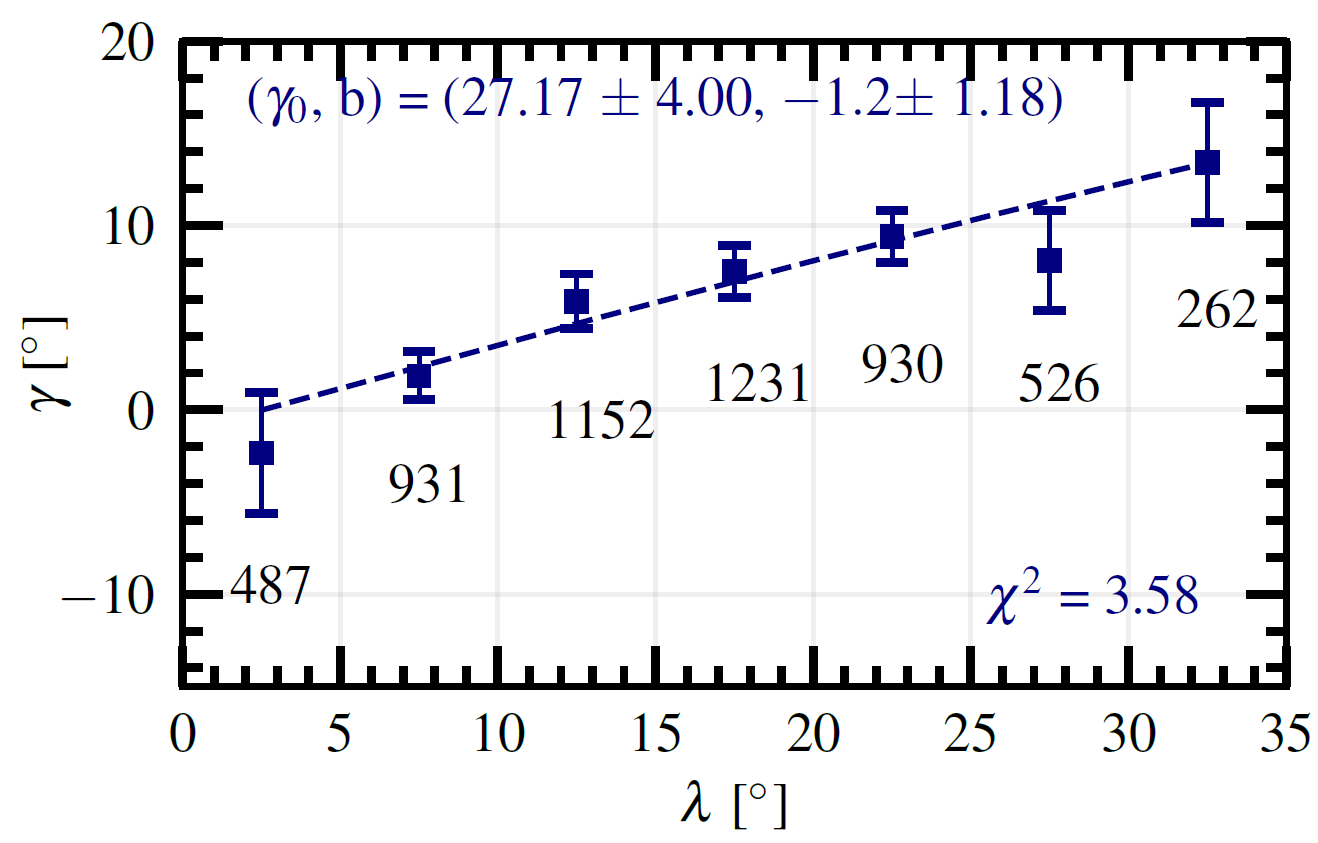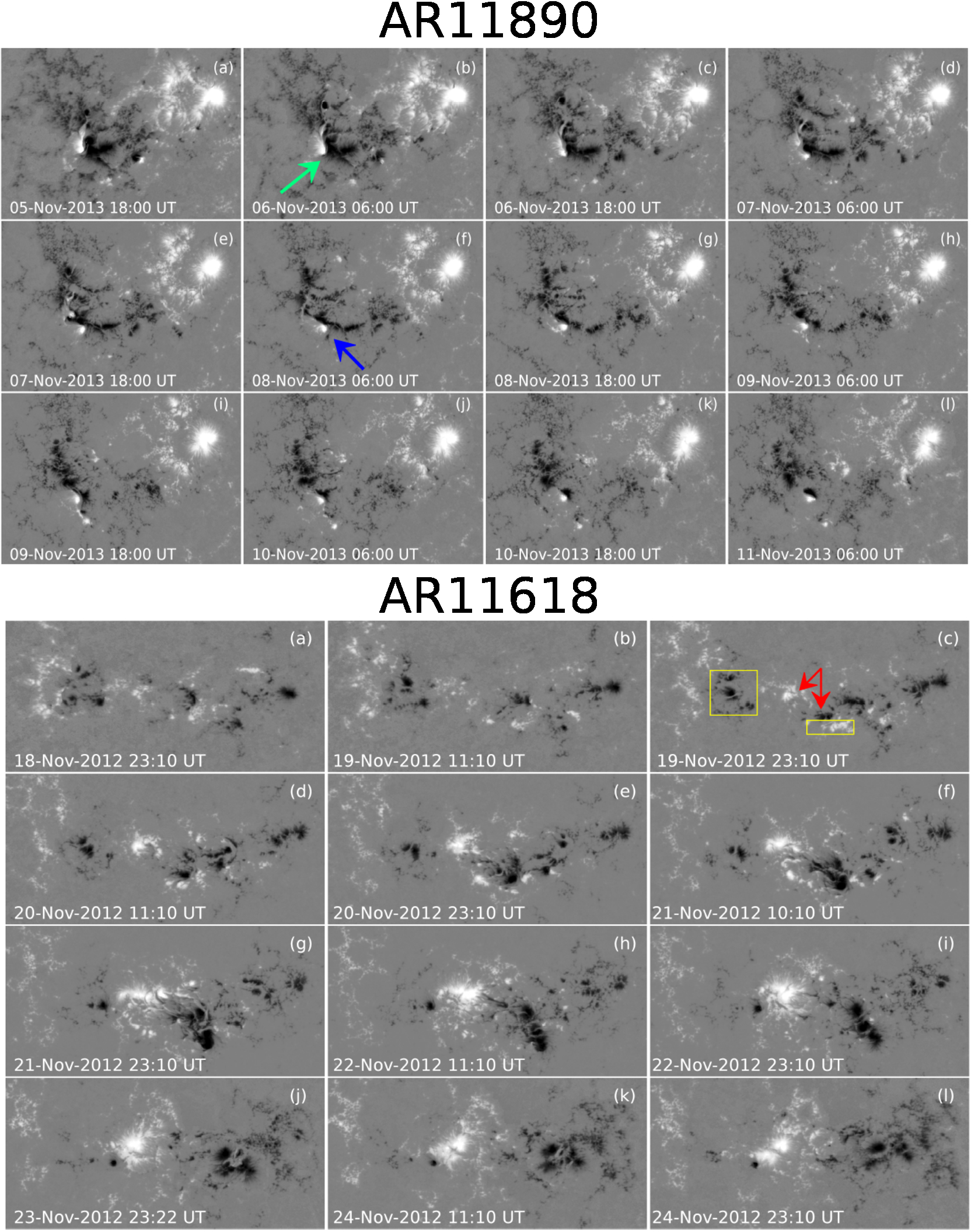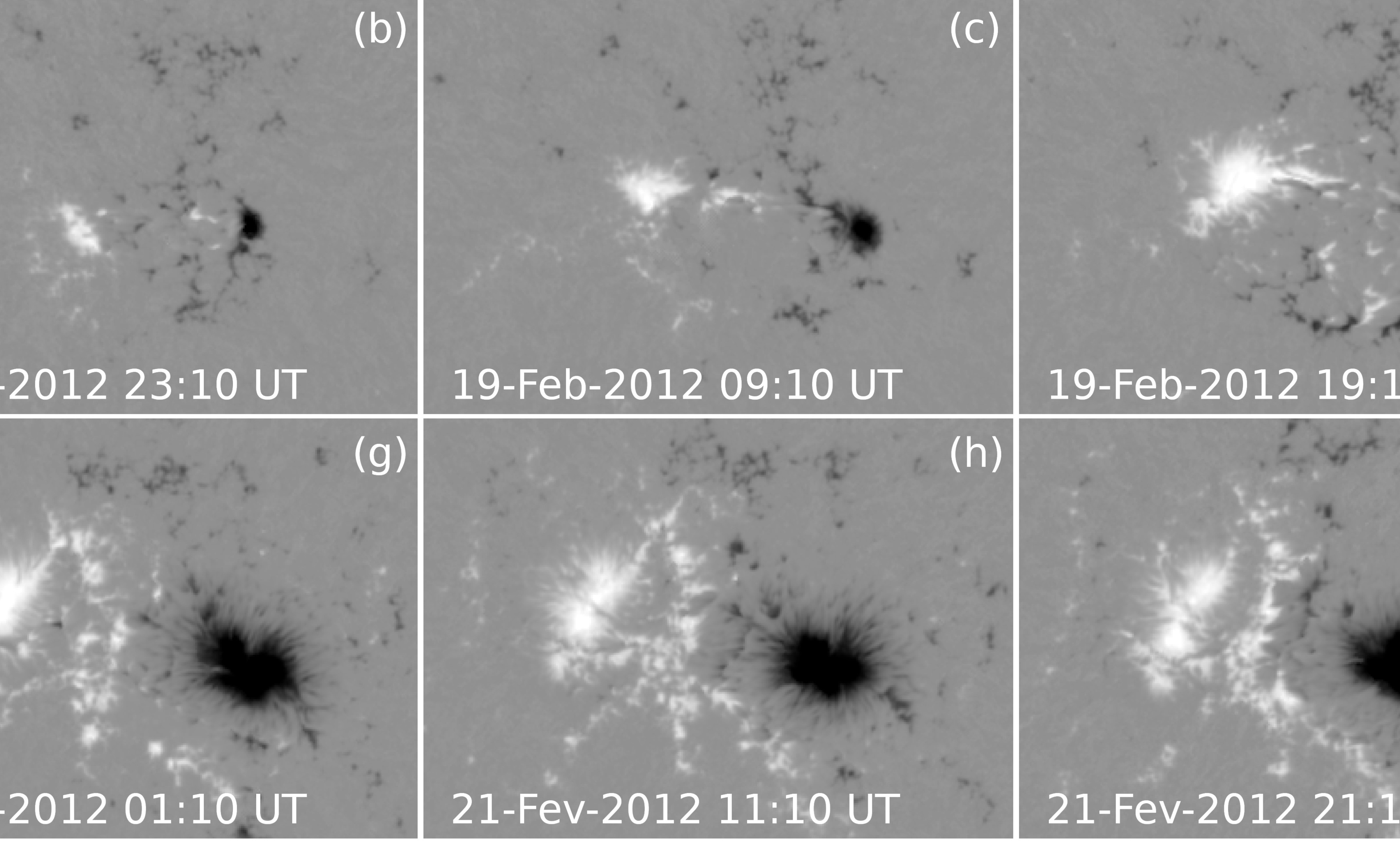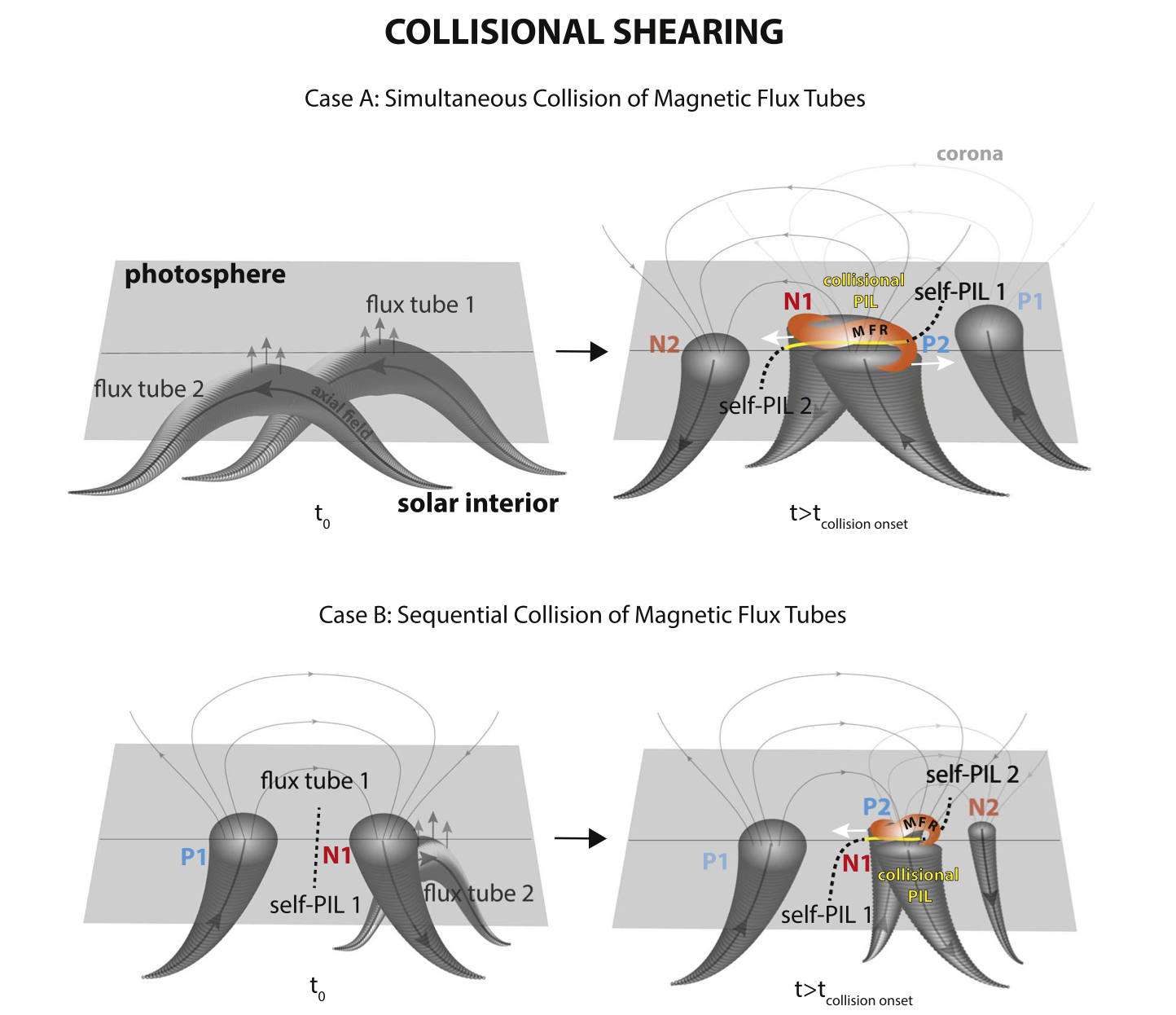Tag Archives: flux emergence
192. Magnetic helicity and free magnetic energy as tools for probing eruptions in two differently evolving solar active regions
An analysis of two active regions shows that differently evolving ARs may produce major eruptive flares even when, in addition to the accumulation of significant free magnetic energy budgets, they accumulate large amounts of both left- and right-handed helicity without a strong dominance of one handedness over the other.
177. Magnetic Helicity and Energy of Emerging Solar Active Regions and Their Eruptivity
151. Hemispheric Sign Preference of Magnetic Helicity Flux in Solar Cycle 24
To study the physical processes causing the hemispheric sign preference (HSP) of helicity in the Sun, the authors surveyed active regions (ARs) observed during Solar Cycle 24 to estimate their magnetic helicity flux, and studied the HSP dependences of the magnetic helicity flux with respect to various properties of ARs.
147. Recurring Homologous Solar Eruptions in NOAA AR 11429
142. On the Lorentz Force and Torque of Solar Photospheric Emerging Magnetic Fields
136. The Trigger Mechanism of Recurrent Solar Active Region Jets Revealed by the Magnetic Properties of a Coronal Geyser Site
134. The First Numerical Modeling of Spontaneous Generation of δ-sunspots
123. Very Fast Helicity Injection Leading to Critically Stable State and Large Eruptive Activity of AR 12673
121. The Origin of Major Solar Activity: Collisional Shearing between Nonconjugated Polarities of Multiple Bipoles Emerging within Active Regions
Magnetic flux of opposite polarities belonging to two different emerging/emerged bipoles inside multipolar magnetic regions, can experience “collisional shearing”, a process resulting in strong shearing and fast cancellation of magnetic flux near the polarity inversion line. This type of flux cancellation is found to be the cause of a succession of major flares and CMEs in complex active regions.










